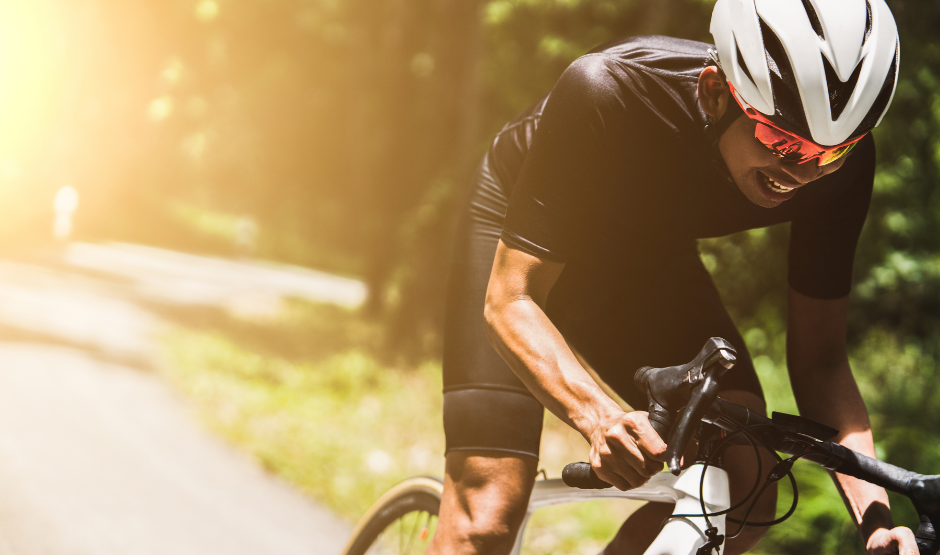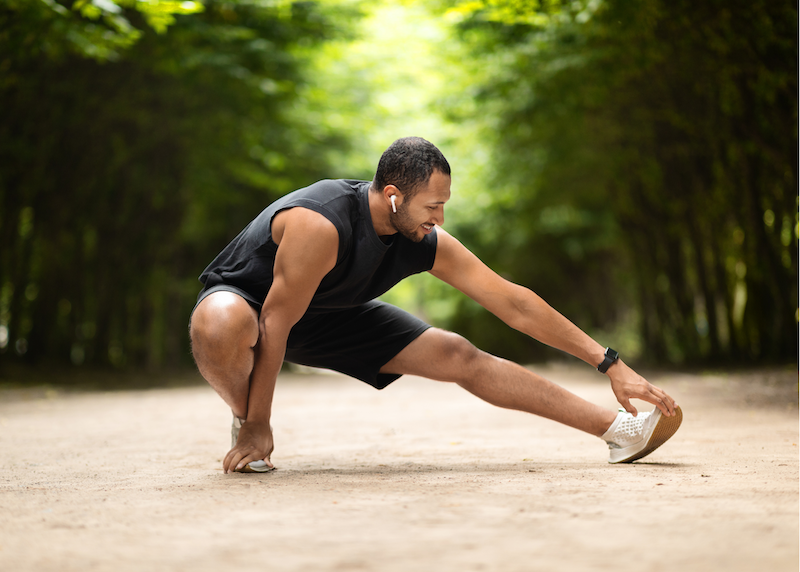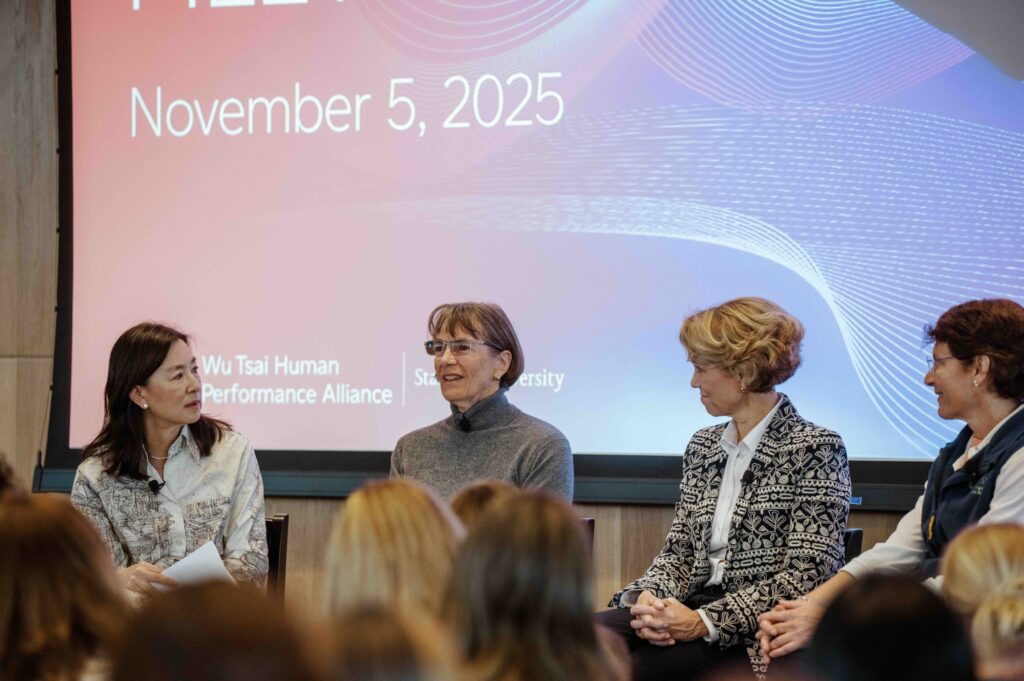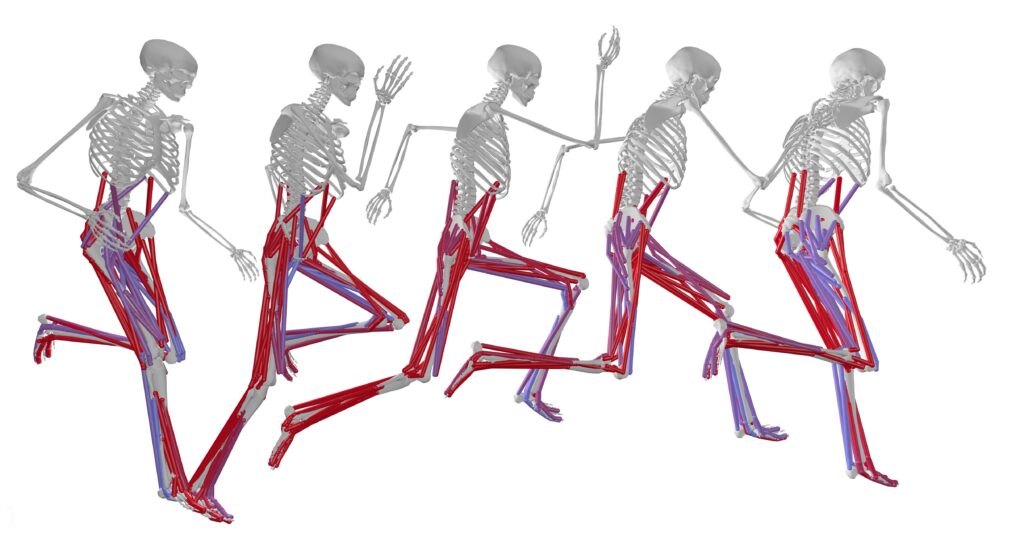Cyclists with similar power use different muscle strategies
Two sprint cyclists can reach identical power relying on completely different muscle strategies. Personalized training may be the key to unlocking their full speed.

Canva Pro Images
When you watch a sprint cyclist tear down a track, their muscles fire to turn pedal strokes into speed. But which muscles matter most and when?
A new study has an unexpected answer: “Cyclists with similar power may use their muscles in very different ways,” said Matthew Bourne, an Associate Professor of Exercise Science at Griffith University.
In the Journal of Biomechanics, Bourne and Wu Tsai Human Performance Alliance colleagues analyzed seven cyclists performing maximal-effort sprints on stationary bikes. Using motion capture, pedal force measurement, and an EMG method that tracks muscle activation through electrical signals, the team fed data into a computational model of the lower body. The model allowed them to estimate forces and power generated by 18 individual muscle-tendon units across the legs during different phases of the pedaling cycle.

Muscles generating the greatest power at different phases of the crank cycle. In the “pushing” phase (blue circle), the vastus lateralis and gluteus maximus generated the highest average positive power. In the “pulling” phase (green circle), the hip adductor group and psoas generated the highest average power. In the “transition” phase (orange circle), the vastus lateralis and rectus femoris generated the highest average power. Credit: Biomechanics of Movement: The Science of Sports, Robotics, and Rehabilitation by Scott L. Delp and Thomas K. Uchida. Illustrations by David Delp.
Surprising Finding
You might think there’s one perfect way to pedal, but two cyclists with similar power output can get there with completely different muscle strategies. For example, one rider relied heavily on quads throughout the stroke, while another leaned on glutes or hip adductors.
“The results highlight the complex interplay of muscles, even in well-trained athletes, and suggest that ‘one-size-fits-all’ training approaches may overlook individual differences in muscle coordination,” said Bourne.
Why It Matters
Such computational modeling approaches could help inform the design of personalized training programs that target specific muscle groups based on each cyclist’s unique biomechanics.
“It also highlights opportunities for optimizing technique by addressing inefficient coordination strategies, such as excessive negative muscle power,” said Bourne.
In collaboration with the Queensland Academy of Sport and Cycling Australia, the team is currently applying this technology to develop personalized training interventions for sprint cyclists.
“The results highlight the complex interplay of muscles, even in well-trained athletes, and suggests that ‘one-size-fits-all’ training approaches may overlook individual differences in muscle coordination,” said Bourne.
For example, a cyclist who leans heavily on hip adductors during the pulling phase might benefit from strengthening neighboring muscles like the psoas major and Iliacus, which also supports this movement. By tailoring training this way, cyclists could theoretically generate more power and reduce the risk of overuse injuries in overworked muscles.
Understanding these subtle differences in muscle recruitment could give athletes and coaches an edge. In the end, it’s not just how strong your legs are, it’s how well they work together to generate power.
“We are deeply grateful to the Wu Tsai Human Performance Alliance for funding The Digital Athlete–Australia,” added lead author Matthew Worsey, a Wu Tsai Alliance Agility Project awardee and a Lecturer at Griffith University. “Their support has enabled the development of cutting-edge digital twin technology, which is providing cyclists and coaches with unprecedented performance insights.”
The work is part of a Wu Tsai Human Performance Alliance Agility Project, the Digital Athlete – Australia.
Co-authors include Matthew Worsey, Claire Crossley, Thomas Wackwitz, Tyler Collings, and Claudio Pizzolato.
Latest News

December 10, 2025
Study suggests how eccentric resistance exercises might strengthen tendons

November 21, 2025
Recordings Now Live: Female Athlete Research Meeting 2025

September 23, 2025
In sprinting, where the foot lands may be key to speed
Get Engaged
Join our mailing list to receive the latest information and updates on the Wu Tsai Human Performance Alliance.
